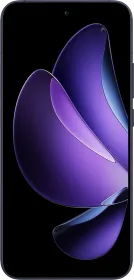Sony’s Stacked CMOS Sensor technology, which first debuted in its high-end point and shoot cameras like the popular RX 100 IV, is now coming to smartphones! At International Solid-State Circuits Conference, Sony announced new triple layer 1/2.3-inch 21.2 Megapixel Exmor RS sensor.
What’s triple layer stacked CMOS sensor with DRAM in smartphones?
In original CMOS sensors, the Photo diode surface (that gathers light) and the high-speed processing circuitry were all in one layer. Later on, the Back side illuminated (BSI) CMOS sensors moved most of this circuitry to the back of the photodiode layer thus freeing more surface area to capture light.
![Notice that the [1] and [2] have been moved to separate layers](https://i0.wp.com/www.smartprix.com/bytes/wp-content/uploads/2017/02/tripple-layer-CMOS-sensor-with-DRAM.jpg?ssl=1&quality=80&w=520&h=390)
The triple layer stacked sensors move all the high-speed processing circuitry behind the light-collecting pixels or photo diodes, thus facilitating faster readout time.
To allow Bionz sensor to read all the additional data effectively, sony also added a buffer layer of fast 1G Bit DRAM in between where pixel data will be stored before being passed on to the Bionz image processor.

The new triple layer stacked Sony smartphone camera sensor should be able to capture images faster and handle high-resolution photography, like 4K videos and slow motion videos at high FPS, better. It will also help avoid focal plain distortion. Sony also has a video demonstration of its practical advantages.
So, exactly how fast are we talking here?
Well, Sony claims 8X speed improvements over recently launched Sony IMX318 and that’s saying something. The new sensor is capable of reading one still image of 19.3 million pixels in only 1/120 of a second. According to Sony, It can also shoot Full-HD slow-motion videos at 1000fps. But we will know for sure only when the sensor starts showing up in high-end smartphones, which is likely to happen very soon.


































